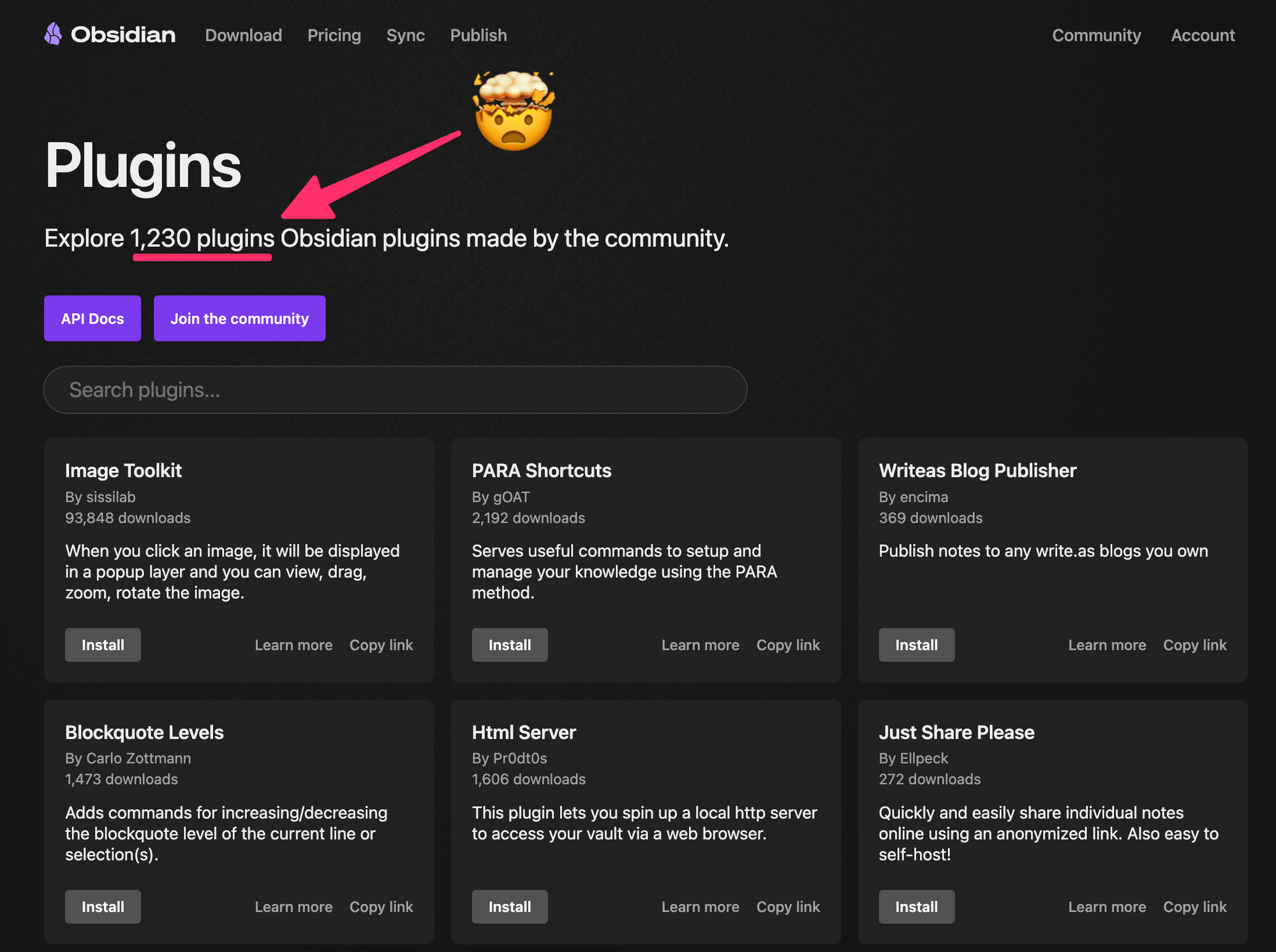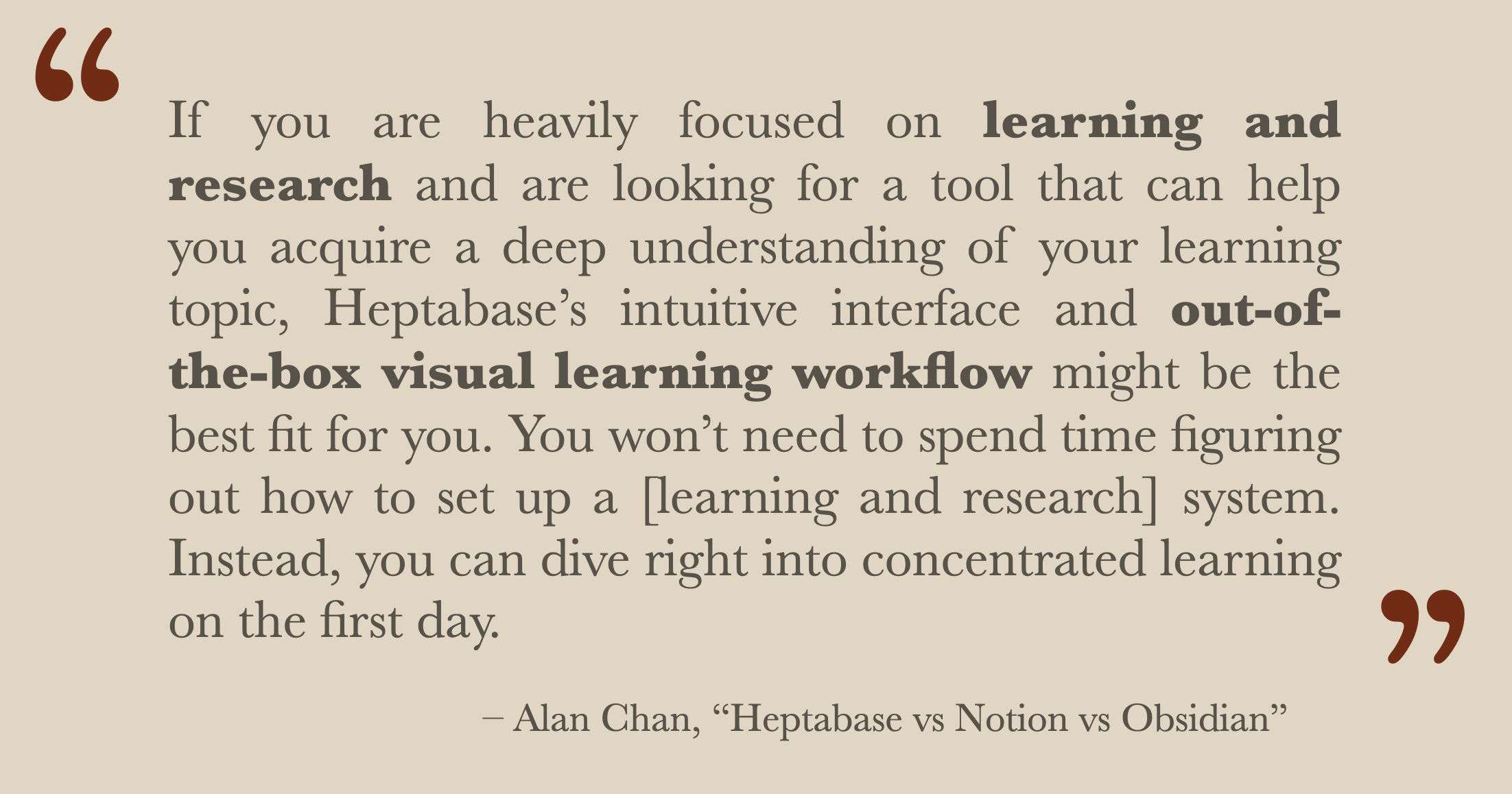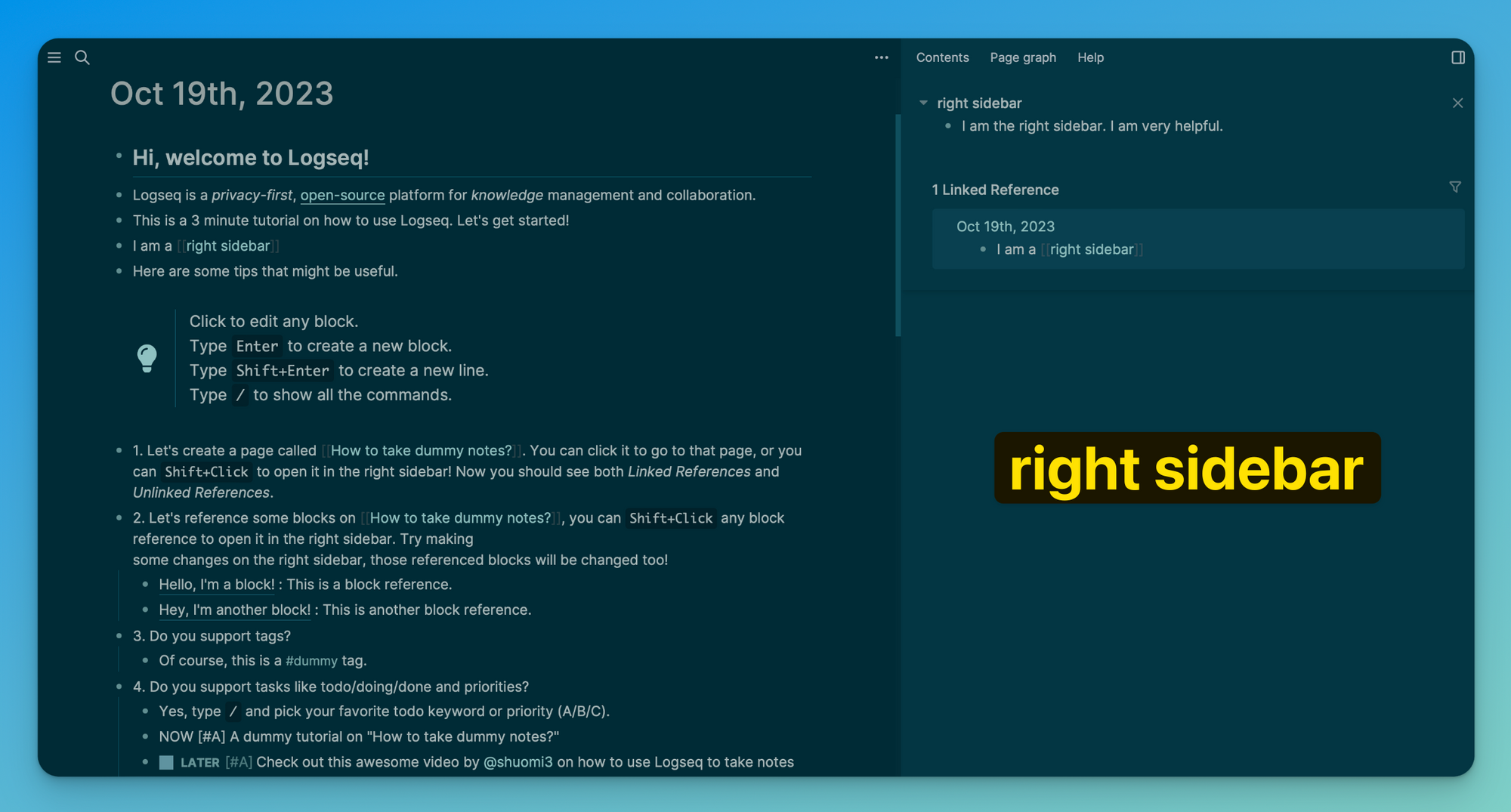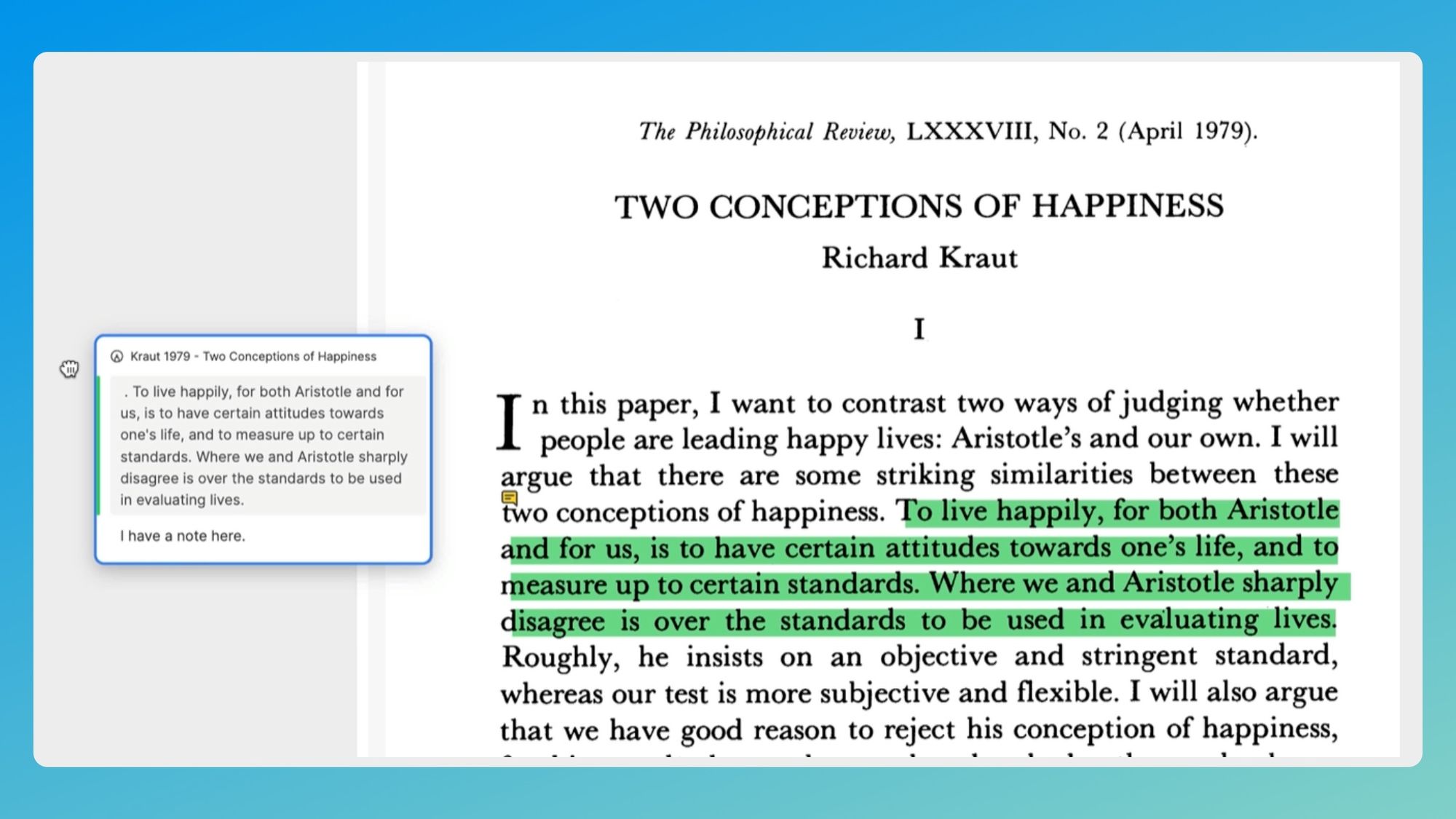I’m trying out Heptabase (and maybe kind of abandoning Obsidian)
Using Heptabase the past few weeks has forced me to confront two major problems I have had when using Obsidian for research.

Link to video on YouTube here; link to video on Rumble here.

Want to check out Heptabase? Click here for a 7-day free trial. (Disclosure: that's an affiliate link. More on that at the bottom of this post.)
Abandoning Obsidian?
I haven’t actually decided that I’m leaving Obsidian. I have several Obsidian vaults and will likely continue to use a number of them for quite some time. However, using Heptabase the past few weeks has forced me to confront two major problems I have had when using Obsidian for research.
Problem #1: too much customization
The first problem is something that for a long time I considered a benefit of using Obsidian. I’m referring here to the never-ending customization that Obsidian enables, especially by way of its 1200+ community plug-ins.

There are sooooo many amazing community plugins for Obsidian. But for me—and plenty of others—using those plug-ins to customize Obsidian has resulted in an enormous waste of time. I think it safe to say that I have spent at least five and probably closer to ten (or fifty) times more time customizing Obsidian than I have using Obsidian to actually do the research and scholarship that brought me to the app in the first place.
One thing I like about Heptabase is that it gives me pretty much everything I need without my having to customize it. Another way of saying this is that “out of the box,” Heptabase more or less does what I want.
Alan Chan, one of the Heptabase founders, uses that phrase “out of the box” in explaining which kinds of people might benefit from using Heptabase. In his piece "Heptabase vs Notion vs Obsidian," he writes,

Problem #2: getting lost
Getting into the “visual learning workflow” that Alan speaks of in the passage above and that Heptabase makes possible is what helped me to more fully recognize a second problem I have had with Obsidian, namely, the fact that I often get lost inside of it.
I’m not yet at a point where I can properly explain why I often lose my place when working in Obsidian, but one thing I can say is that part of it has to do with the fact that Obsidian doesn’t have the sidebar on the right that Heptabase has—and that Roam and Logseq also have.

That right sidebar is something I have always missed after making the switch from Roam to Obsidian. In the absence of such a sidebar, I find myself over and over again having to resize Obsidian windows and panes—and when I do this I frequently lose my place, which makes for a workflow that doesn’t flow all that well.
After trying out Heptabase for a day or two, I went back into Obsidian and managed to create something a little like the sidebar seen in the screenshot above, at which point I thought, “Great, now I don’t need to switch from Obsidian to Heptabase.” I was relieved because I don’t like the idea of moving my notes from one app to another.
The last time I switched from taking and storing notes in one app to another was about three years ago, when I switched to Obsidian after using Roam for over a year (I used an app called The Archive for about a year prior to using Roam).
A few months ago I came up with a rule I’ve been trying to follow ever since. That rule is to not seriously entertain using a different app if I’m 80% satisfied with the one I’m currently using.
I thought I was more than 80% satisfied with Obsidian. I was more than 80% satisfied with Obsidian. And yet, even after making tweaks to Obsidian to make it a little more like Heptabase, I soon returned to Heptabase.
I remain proud of the janky sidebar I created in Obsidian, but I realized that wasn’t the only thing that made working with Heptabase so much easier and more pleasant than working with Obsidian.
And yet, as I said above, I’m still not entirely sure why I find working with Heptabase so much easier and more pleasant than working with Obsidian. After experimenting with it for a few more weeks, perhaps I’ll be in a position to explain things more fully. (That explanation would likely include discussion of the visual/spatial thinking that Heptabase makes possible; its Notion-like tables; the fact that its mobile app makes it easy and fast to add notes to a journal/day-of-the-week page; and the different ways Heptabase lets you incorporate highlights into whatever project you're working on.)
📽 Next video: PDF highlights in Heptabase
In the meantime, I’m hoping to make some videos about Heptabase’s main features as well as what I am using Heptabase to do.
I have already recorded the first video, which is about working with PDF highlights in Heptabase. In this regard, Heptabase is better even than Logseq, which many people understandably point to when it comes to apps that enable you to drag a highlighted passage from a PDF, drop it onto whatever page you’re using to collect and add notes to those highlights, and then, if you want, click on the highlight to be taken back to the page of the PDF it came from.

Disclosure
A couple of weeks ago I was accepted into Heptabase’s affiliate program. This doesn’t mean that I work for Heptabase, but it does mean that if any of you use this link to check out Heptabase and then decide to pay for a Heptabase subscription, I’ll get a 20% cut of what you pay.
I’ll leave it up to you to decide whether the $40–$60 I suspect I’ll make each year as a Heptabase affiliate is a large enough sum to incentivize me to make Heptabase videos purely for financial gain. Just keep in mind that each of the videos I end up making will likely take me as long as most of my past videos have taken me to make, which is usually 10 to 20 hours from start to finish.
If you want to read more about Heptabase, check out Alan Chan's "Heptabase 1.0."